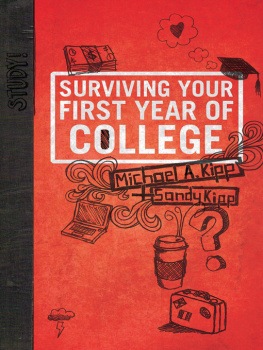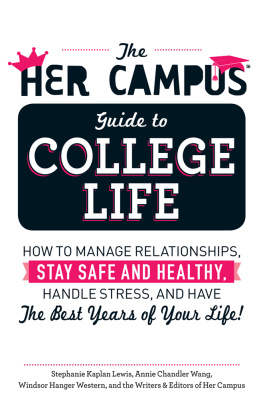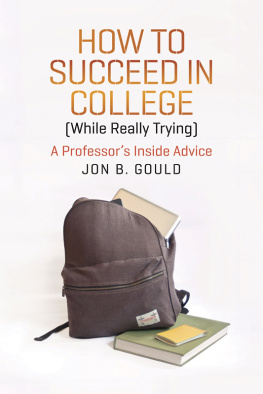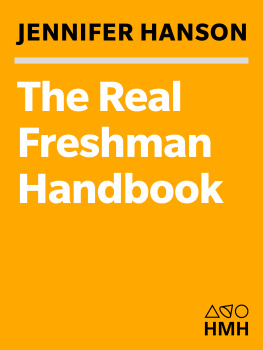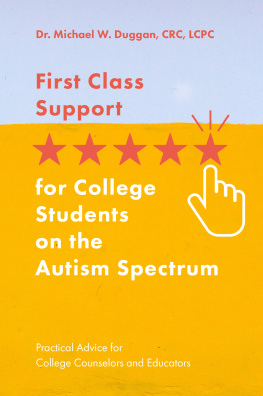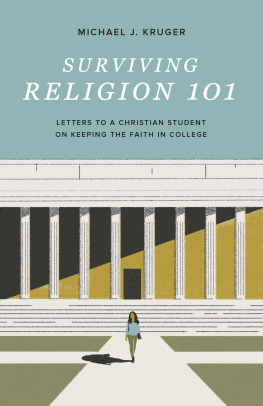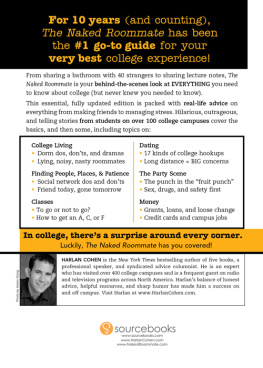

Copyright 2012 by Barefoot Ministries
2012 eISBN 978-0-8341-5118-5
Printed in the United States of America
Editor: Audra C. Marvin
Cover Design: J.R. Caines
Interior Design: Sharon Page and J.R. Caines
All Scripture quotations, unless indicated, are taken from the Holy Bible, New International Version (NIV). Copyright 1973, 1978, 1984 by International Bible Society. Used by permission of Zondervan Publishing House. All rights reserved.
Library of Congress Cataloging-in-Publication Data: 2011939319
CONTENTS

I attended a different university or college each of my first four years after high school. Crazy, eh? I did not plan to do that; it just sort of happened.
I had always planned to attend college. During my junior year of high school, I sent out applications to schools I thought I would like to attend in my home state. I had no idea what I was actually interested in doing or studying. At the time, I was only interested in being close to the beach. That did not lend itself to making a wise decision and set up my transition to another school almost from the beginning.
Years later, I now find myself teaching at a university. In my role as professor, I have the distinct privilege of interacting with prospective students as well as current college students. Something I am more and more convinced of is the considerable importance of choosing the right school. And the right school does not only mean a desirable location. In fact, the location can quickly become a secondary issue when compared to other important matters. Although in reality some students might love the beach, the very best place for them to go to college might not be near an ocean since it could present itself as a large distraction from the primary task at handstudying. However, with the right expectations and personal discipline, there is no reason why you cannot have the beach and study too.
My experience at four different schools actually turned out pretty well, but I would not recommend anyone setting out to do what I did. I think choosing the right institution and staying there for your entire college career is the more desirable alternative. The relationships formed over time with not only peers but faculty and staff are of immeasurable value. While a person learns a great deal in the classroom during college, it is the lifelong relationships formed during your twenties (and after) that will sustain you through your journey in this life. Can you imagine the depth those relationships would be able to reach over the years rather than just several months? If I could change what I did, I would find the right school the first time and stay there. Thats my first piece of advice to you.
Getting advice from someone whos already experienced something can be helpful. That is part of the reason I have written this book. But my experience is limited, so I have also attempted to leverage that by including throughout this book advice from other students, administrators, and faculty that will help frame the things I write here. Of course, I encourage you to test all that is included here by bouncing it off your friends and relatives. They know you and will be better able to advise you on specific issues than any book ever could.
If you are one of the fortunate ones who is able to choose a good college the first time and then stay there, this does not automatically mean you are limiting your experiences. There are numerous educational opportunities to be experienced in your college career, even at one institution. From studying abroad to online courses offered by other universities or even spending a semester at another school, the possibilities are limited only by oneself. The best way to discover what is available is to do your own research and learn how those offerings might best help you encounter the subjects and experiences you desire.
One last thing for you to keep in mind throughout your college journey: It is likely that you will need some help at some point during your studies, and whatever it is that you need, there is probably a free or low-cost service available on your campus. Schools have everything from free tutoring, free or low-cost medical clinics, and counseling services to cheap laundry facilities. And beyond your needs, there are generally other quality facilities like gyms, weight rooms, pools, and sports courts (basketball, volleyball, racquetball, etc.) at your disposal.
One thing is for certain: College is the adventure of a lifetime! It can present some of the very best and conversely some of the most difficult situations for a newly independent person to face. But to quote Tom Hanks in the film A League of Their Own, It is the hard that makes it great.
While it is my hope that your college years are mostly highs, the potential for the heights and depths of human experience is what can make this experience such an exhilarating and exciting adventure.
Welcome to the journey of entering college!

This might be the biggest issue that I want to communicate to college freshman. They only have one chance to be in college, and these four years go quickly. This is their time. This is one of the most unique experiences they will ever have. This is the time for them to be in college. I desperately encourage them to make the most of it. It kills me that some students do not recognize what a cool opportunity this is and fully invest themselves in these four years because they will never get it back.
Kenton, assistant director of campus life at a Christian university

College can be one of the most transformative events in a persons life. And going away to college is among the most significant of events in a persons second decade of life. It is an adventure like no other. Imagine embarking on a trip to the unknown. For new college students, the prePARTion for the journey to their new campuses and lives could be a bit like NASAs two space rovers, Spirit and Opportunity, headed to Mars, on their very first trip ever to the Red Planet. Read this account of that important journey:
Both rovers were launched from Cape Canaveral Air Force Station on central Floridas Space Coast. Spirit ascended in daylight on June 10, 2003. Opportunity followed with a nighttime launch on July 7 after several days of delays for repairing cork insulation.
During the cruise to Mars, Spirit made four trajectory correction maneuvers. Opportunity performed three To prevent possible problems from the flares effects on computer memory, mission controllers commanded rebooting of the rovers computers, a capability originally planned for use on Mars but not during the cruise.
With the heat-shield portion of the aeroshell pointed forward, the spacecraft slammed into the atmosphere at about 5.4 kilometers per second (12,000 miles per hour) Spirit landed on Jan. 4, Universal Time (at 8:35 p.m. Jan. 3, Pacific Standard Time). It bounced about 8.4 meters (27.6 feet) high. After 27 more bounces and then rolling, it came to a stop about 250 to 300 meters (270 to 330 yards) from its first impact. Spirit had journeyed 487 million kilometers (303 million miles).
Next page
